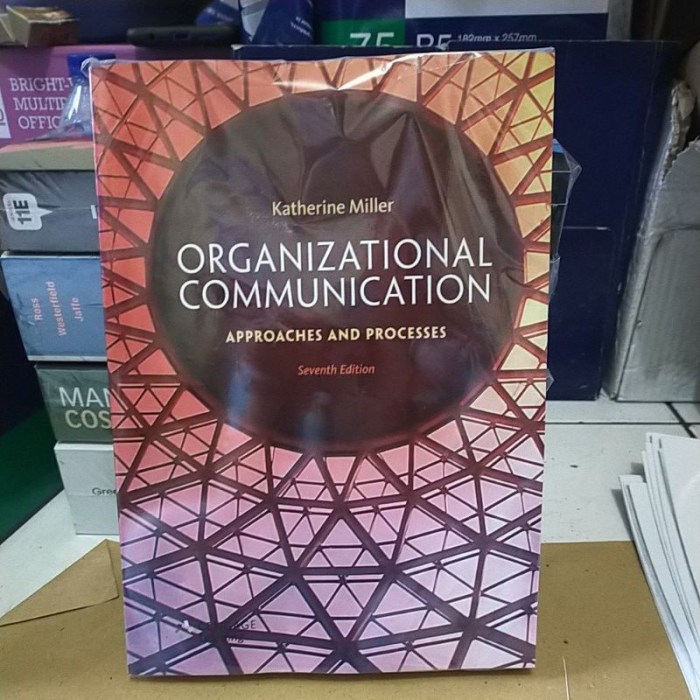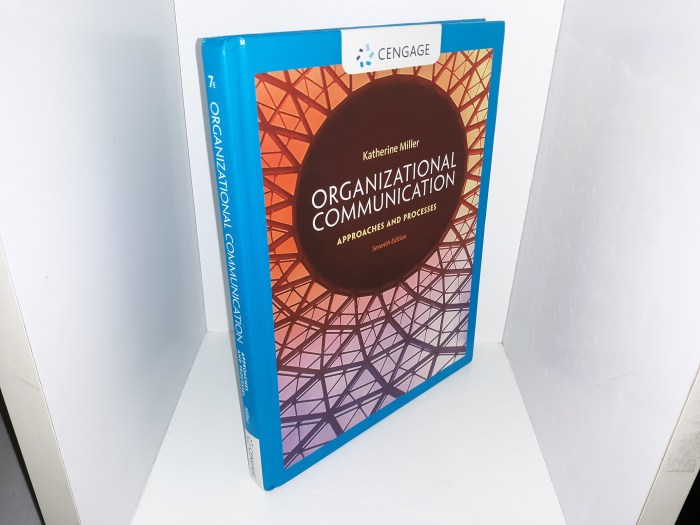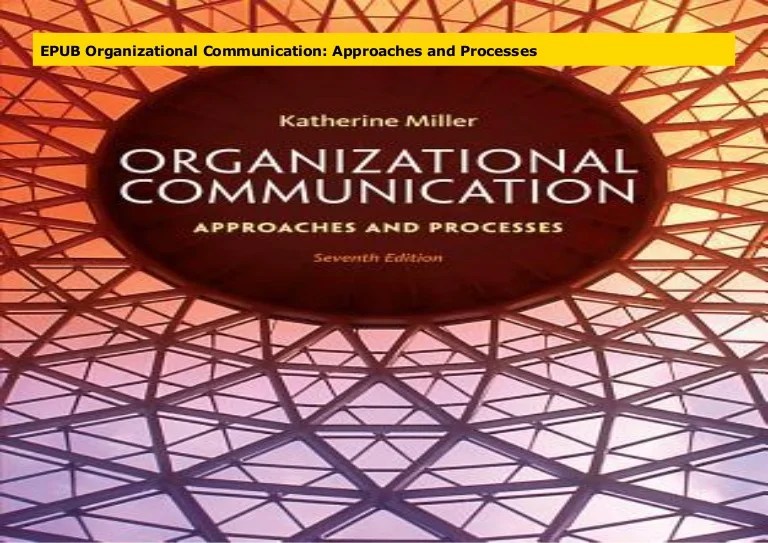Organizational communication approaches and processes 7th ed – In Organizational Communication Approaches and Processes, 7th Edition, readers embark on an in-depth exploration of the multifaceted world of organizational communication. This authoritative text delves into the various approaches and processes that shape how organizations communicate, providing a comprehensive understanding of the field.
Throughout the book, readers will gain insights into the strengths and weaknesses of different communication approaches, the intricacies of the organizational communication process, and the impact of technology on communication effectiveness. With real-world examples and practical strategies, this guide empowers readers to navigate the complexities of organizational communication and foster effective communication within their organizations.
Organizational Communication Approaches
Organizational communication approaches refer to the frameworks and strategies that organizations use to communicate with their stakeholders. These approaches can vary depending on the size, structure, and culture of the organization.
There are three main types of organizational communication approaches:
- Top-down communicationflows from the top of the organization to the bottom. This approach is often used to disseminate information, such as company policies or announcements, to employees.
- Bottom-up communicationflows from the bottom of the organization to the top. This approach is often used to gather feedback from employees and to provide input on decision-making.
- Horizontal communicationoccurs between employees at the same level of the organization. This approach is often used to share information and to collaborate on projects.
Each of these approaches has its own advantages and disadvantages. Top-down communication is efficient and can be used to reach a large number of people quickly. However, it can also be seen as authoritarian and can discourage feedback from employees.
Bottom-up communication is more participatory and can help to ensure that the voices of all employees are heard. However, it can be time-consuming and can be difficult to manage in large organizations. Horizontal communication is more collaborative and can help to build relationships between employees.
However, it can also be difficult to coordinate and can lead to information overload.
Organizational Communication Processes

The organizational communication process refers to the steps involved in communicating with stakeholders. These steps include:
- Planning: This step involves determining the purpose of the communication, identifying the target audience, and selecting the appropriate communication channels.
- Encoding: This step involves converting the message into a form that can be understood by the target audience.
- Transmission: This step involves sending the message to the target audience.
- Decoding: This step involves the target audience interpreting the message.
- Feedback: This step involves the target audience providing feedback on the message.
These steps are interrelated and must be carefully managed in order to ensure that the communication is effective.
Barriers to Effective Organizational Communication

There are a number of barriers that can prevent effective organizational communication. These barriers include:
- Noise: Noise refers to anything that interferes with the communication process, such as distractions, interruptions, or misunderstandings.
- Filtering: Filtering occurs when information is selectively withheld or distorted by individuals in the organization.
- Gatekeeping: Gatekeeping occurs when individuals in the organization control the flow of information.
- Semantic barriers: Semantic barriers occur when individuals in the organization use different words or phrases to mean different things.
- Cultural barriers: Cultural barriers occur when individuals in the organization have different cultural backgrounds and values.
These barriers can be overcome by using clear and concise language, providing feedback, and creating a culture of open communication.
The Role of Technology in Organizational Communication: Organizational Communication Approaches And Processes 7th Ed
Technology has a significant role to play in organizational communication. Technology can be used to:
- Improve communication efficiency: Technology can be used to automate communication tasks, such as sending emails and scheduling meetings.
- Reach a wider audience: Technology can be used to reach a wider audience, such as through social media and video conferencing.
- Enhance collaboration: Technology can be used to enhance collaboration between employees, such as through shared workspaces and instant messaging.
- Provide feedback: Technology can be used to provide feedback on communication, such as through surveys and polls.
Technology is a powerful tool that can be used to improve organizational communication. However, it is important to use technology wisely and to avoid creating barriers to communication.
The Future of Organizational Communication

The future of organizational communication is bright. Technology will continue to play a major role in organizational communication, and new technologies will emerge that will make communication even more efficient and effective.
In addition, the role of communication in organizations will continue to grow. Communication will become increasingly important for building relationships, managing change, and achieving organizational goals.
Organizations that embrace the future of communication will be well-positioned to succeed in the 21st century.
Expert Answers
What are the key differences between the functional and symbolic approaches to organizational communication?
The functional approach emphasizes the practical and instrumental role of communication in achieving organizational goals, while the symbolic approach focuses on the communicative processes that create and shape organizational culture and identity.
How can organizations overcome barriers to effective communication?
Organizations can overcome barriers to effective communication by fostering open and transparent communication channels, encouraging active listening, providing training and development opportunities, and leveraging technology to enhance communication.